MISSAL, for the Use of Paris, in Latin, ILLUMINATED MANUSCRIPT ON VELLUM [Paris, c.1410]295 x 210 mm. 307 leaves: 1 6, 2-14 8, 15 1 0, 16-38 8, 39 3, original foliation in red roman numerals in upper right margin of rectos beginning on seventh leaf, catchwords in lower margins of final versos, some decorated with heads and grotesques, COMPLETE, 30 lines written in black ink in a gothic bookhand in two columns between four verticals and 31 horizontals ruled in black, justification: 203 x 65-14-64 mm, some additional short rulings in margins for corrections and additions, noted prefaces written below ten four-line staves ruled in red with music of square notation, canon of the mass written in 24 lines, rubrics in red or underlined in red, text capitals and some catchwords touched yellow, numerous one- and two-line initials with staves of burnished gold with grounds and infills alternately of pink and blue, both patterned with white, seven three-line initials with staves of blue or pink patterned with white on grounds of burnished gold with foliate infills, leading to hairline sprays or stems of vine leaves in the margins; seven similar five-line initials each accompanied by bars of burnished gold leading to stems of vine leaves on hair-line tendrils or painted stems, some with dragon terminals, TWO SMALL MINIATURES OVER LARGE INITIALS WITH BARS AND FULL BORDERS of vine leaves, foliage and flowers in gold, red and blue (slight cropping of some borders to top and sides, gold initial smudged f.ccxxvii v). 18th-century calf gilt stamped on upper and lower covers with the Instruments of the Passion within a double fillet border, smaller version of motif repeated on spine, and paper label titled in manuscript (worn, tears to upper cover with loss at lower corner). PROVENANCE: 1. The Missal is for the Use of Paris, as stated in the opening rubric on f.1; other rubrics are specific to the cathedral of Notre Dame. The calendar includes St Genevieve in red (3 January), the invention of St Denis (21 April), translation of the head of St Louis (17 May), Germanus, bishop of Paris (28 May), translation of St Marcel (26 July), the Crown of thorns (10 August), St Marcel, bishop of Paris, in red (3 November), miracle of Genevieve (26 November). The rubric for Palm Sunday describes how the procession should go from the cathedral of Notre Dame to Ste Genevieve, f.lxxvii, and the fullness of similar rubrics refering to Notre Dame suggest that the missal was made for use in the cathedral itself. The size of the volume shows that it was intended for those officiating at the mass, and the Passion sequences from the Gospels in Holy Week are initialled in red to cue in the different voices who took the roles of Pilate, Christ etc. The rubrics expect a full complement of clergy, including the bishop himself. Script and decoration show that it was made in Paris c.1410. It was carefully corrected by the scribe and further 15th-century annotations by the canon of the mass show that the manuscript continued in use, despite its generally very clean condition. 2. Ex libris M Le Fay?: in a 16th-century hand f.ccci v; the name repeated f.cxix v. 3. The Abbey of St-Faron at Meaux: 'Monasterii S. faronis Cong. S. Maur' inscibed at the top of the first leaf. The Benedictine Abbey at Meaux, originally dedicated to the Holy Cross, took the name of its 7th-century founder St Faron. Sacked by the Calvinists in 1562, its library was greatly augmented once it had joined the reforming Congregation of St Maur in 1607. Meaux was itself the seat of a bishopric and the book was perhaps preserved for its historical and aesthetic interest. 4. Sir Thomas Phillipps (1792-1872); his lion stamp with Sir T.P. Middle Hill on first leaf; his number 2839 on added paper leaf at front and on label on spine. Acquired, in or from, Paris, it was one of the illuminated manuscripts to attract the attention of comte Paul Durrieu, when he visited the Phillipps library in 1888 (P. Durrieu, '
MISSAL, for the Use of Paris, in Latin, ILLUMINATED MANUSCRIPT ON VELLUM [Paris, c.1410]295 x 210 mm. 307 leaves: 1 6, 2-14 8, 15 1 0, 16-38 8, 39 3, original foliation in red roman numerals in upper right margin of rectos beginning on seventh leaf, catchwords in lower margins of final versos, some decorated with heads and grotesques, COMPLETE, 30 lines written in black ink in a gothic bookhand in two columns between four verticals and 31 horizontals ruled in black, justification: 203 x 65-14-64 mm, some additional short rulings in margins for corrections and additions, noted prefaces written below ten four-line staves ruled in red with music of square notation, canon of the mass written in 24 lines, rubrics in red or underlined in red, text capitals and some catchwords touched yellow, numerous one- and two-line initials with staves of burnished gold with grounds and infills alternately of pink and blue, both patterned with white, seven three-line initials with staves of blue or pink patterned with white on grounds of burnished gold with foliate infills, leading to hairline sprays or stems of vine leaves in the margins; seven similar five-line initials each accompanied by bars of burnished gold leading to stems of vine leaves on hair-line tendrils or painted stems, some with dragon terminals, TWO SMALL MINIATURES OVER LARGE INITIALS WITH BARS AND FULL BORDERS of vine leaves, foliage and flowers in gold, red and blue (slight cropping of some borders to top and sides, gold initial smudged f.ccxxvii v). 18th-century calf gilt stamped on upper and lower covers with the Instruments of the Passion within a double fillet border, smaller version of motif repeated on spine, and paper label titled in manuscript (worn, tears to upper cover with loss at lower corner). PROVENANCE: 1. The Missal is for the Use of Paris, as stated in the opening rubric on f.1; other rubrics are specific to the cathedral of Notre Dame. The calendar includes St Genevieve in red (3 January), the invention of St Denis (21 April), translation of the head of St Louis (17 May), Germanus, bishop of Paris (28 May), translation of St Marcel (26 July), the Crown of thorns (10 August), St Marcel, bishop of Paris, in red (3 November), miracle of Genevieve (26 November). The rubric for Palm Sunday describes how the procession should go from the cathedral of Notre Dame to Ste Genevieve, f.lxxvii, and the fullness of similar rubrics refering to Notre Dame suggest that the missal was made for use in the cathedral itself. The size of the volume shows that it was intended for those officiating at the mass, and the Passion sequences from the Gospels in Holy Week are initialled in red to cue in the different voices who took the roles of Pilate, Christ etc. The rubrics expect a full complement of clergy, including the bishop himself. Script and decoration show that it was made in Paris c.1410. It was carefully corrected by the scribe and further 15th-century annotations by the canon of the mass show that the manuscript continued in use, despite its generally very clean condition. 2. Ex libris M Le Fay?: in a 16th-century hand f.ccci v; the name repeated f.cxix v. 3. The Abbey of St-Faron at Meaux: 'Monasterii S. faronis Cong. S. Maur' inscibed at the top of the first leaf. The Benedictine Abbey at Meaux, originally dedicated to the Holy Cross, took the name of its 7th-century founder St Faron. Sacked by the Calvinists in 1562, its library was greatly augmented once it had joined the reforming Congregation of St Maur in 1607. Meaux was itself the seat of a bishopric and the book was perhaps preserved for its historical and aesthetic interest. 4. Sir Thomas Phillipps (1792-1872); his lion stamp with Sir T.P. Middle Hill on first leaf; his number 2839 on added paper leaf at front and on label on spine. Acquired, in or from, Paris, it was one of the illuminated manuscripts to attract the attention of comte Paul Durrieu, when he visited the Phillipps library in 1888 (P. Durrieu, '
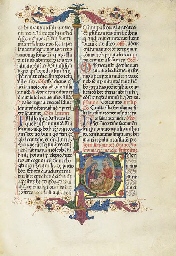


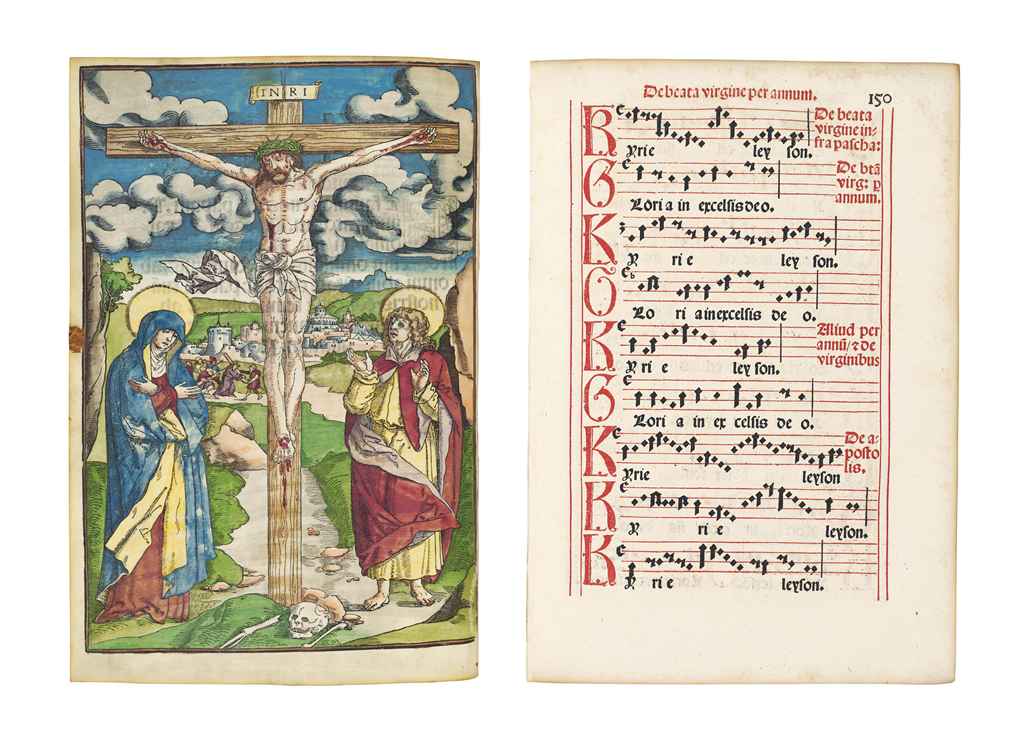


.jpg)
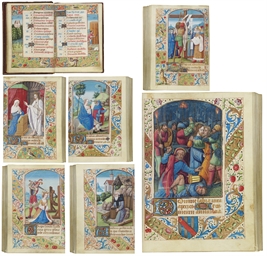
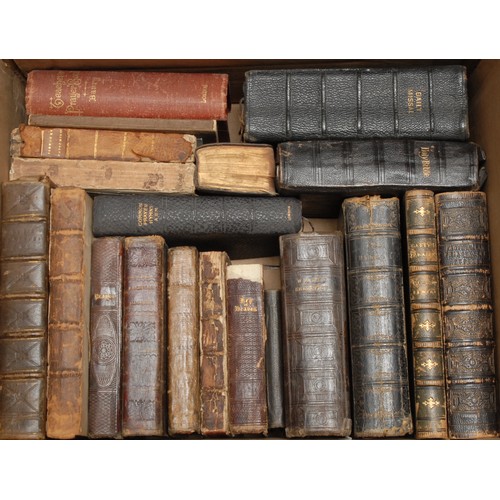
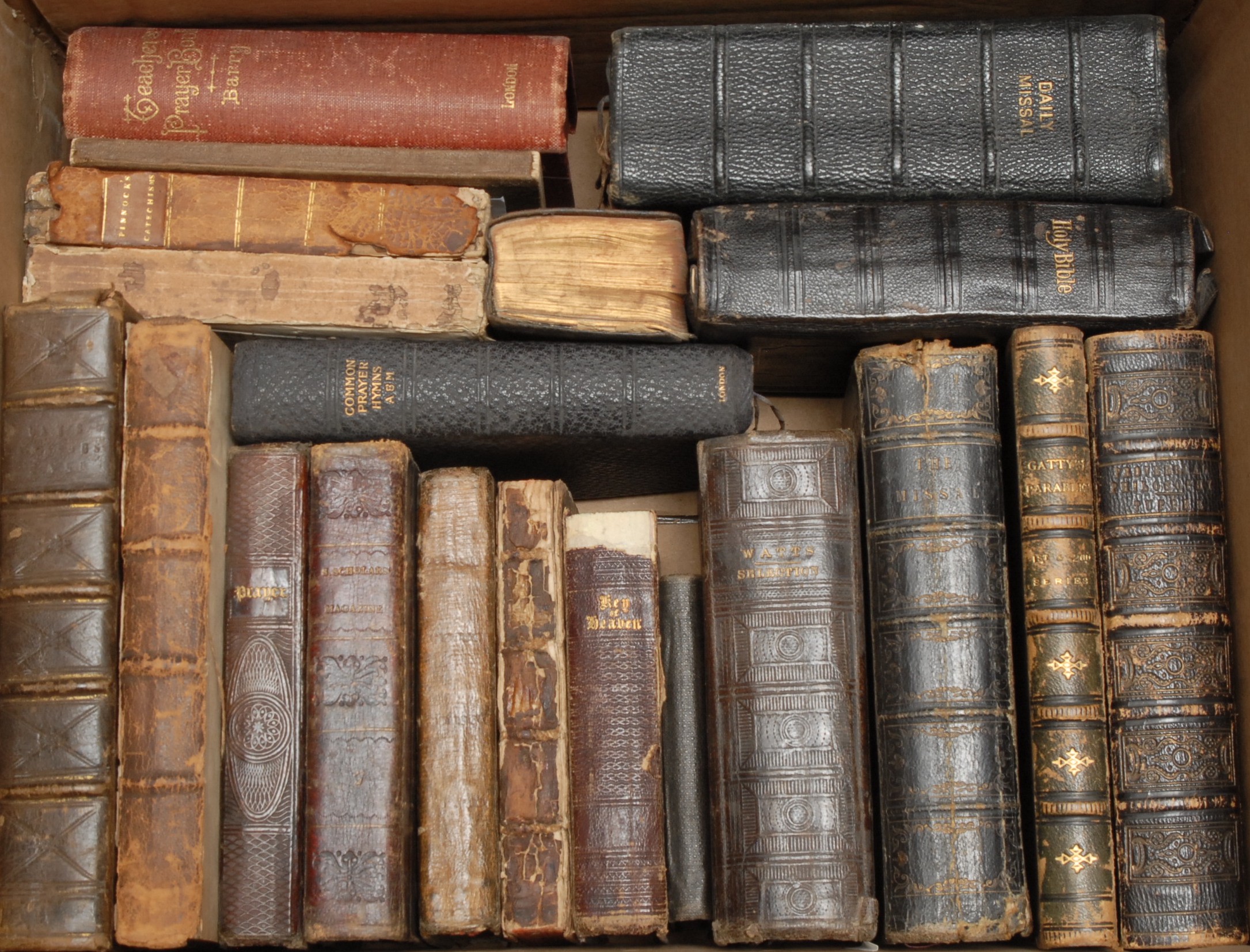




Try LotSearch and its premium features for 7 days - without any costs!
Be notified automatically about new items in upcoming auctions.
Create an alert